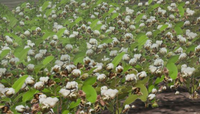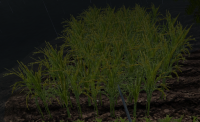Farming
Revision as of 06:03, 3 September 2020 by Surrealife1 (talk | contribs) (removed fence building error)
Main / Skills / Nature / Farming
Contents
Description
The farming skill covers cultivating fields, sowing seeds, tending the crops, and harvesting the produce.
Tools of the Trade
- Rake - for farming
- Scythe - for harvesting wheat, barley, oat and rye
- No tool is required when harvesting any of the other crops.
Notes
- Crops can take several real-life days to grow, during which, a farmer should tend ("farm") the field tiles to remove weeds. This can be done approximately once every real-life day and will improve the eventual harvest. Quality and yield of the harvest also increase with higher farming skill.
- Crops can be harvested at any time after the first growth level, but harvesting too early or too late results in zero or reduced return. When the farm is ready to harvest (ripe), the crop will look visually look "ready" and will also relate this upon examination. Fields take between 3 and 5 real-life days to ripen. See the "Images" section below for pictures of each crop in the ripe stage.
- If an animal grazes a crop tile down by one stage, when the crop regrows, the yield will be increased by 1.
- Farming can be done while moving, so long as you do not move too far away (two tiles) from the tile you are currently working on.
- The minimum harvest yield is 2. Tending your crops will increase your crop yield when harvested.
- It is not possible to produce a rare item from a moment of inspiration (rare roll) while harvesting, sowing, or tending any kind of farm field. It is believed, however, that a moment of inspiration during a harvest action may increase the chance at a higher yield during that single action.
- The seeds and veggies needed to start farming can be found while botanizing, foraging, or manually harvesting crops from a field. Harvested cotton, strawberries, pumpkin, wemp and reed plants must be picked to recover seeds for replanting.
- Seeds can be sown on dirt tiles or in large planters.
- The quality of the seed does not affect the growth time of the fields.
- Clearing crops that have turned to weeds will return one seed.
- The maximum slope on which you can sow seeds is 8, where 8 = (highest north-south tile border's slope) + (highest east-west tile border's slope). For example, the slope can be level EW and 8-steep NS, or it can be 4-steep EW and 4-steep NS, etc. Attempting to sow seeds on a greater slope results in a message "The ground is not flat enough for crops to grow. You need to flatten it first". Farm tiles function the same with a slope 8, flat or anything in between.
Examining Crops
- Anyone can verify if a field needs tending while holding an activated rake. Messages from this examination include:
- "The crops grow steadily" - means the field is in order.
- "It could use a touch from the rake or some other farming tool" - means it needs weeding and maintenance work performed by tending with an activated rake.
- "Rotting old weeds" - means the field has gone unmaintained for too long and can no longer be harvested for useful produce.
- Those with a farming skill below 15: can see the state of growth of a field, whether or not the field is tended or untended, and which type of crop is growing in a field (except when merely sprouts), on the field tile they are currently standing on.
- At level 15 farming skill: players can mouse over a field and determine crop type, and whether or not the field is tended or untended, up to one tile away.
- At level 20 farming skill: players can further determine the growth level of a field. The levels are, chronologically sorted:
- You see a patch of freshly sown field.
- A few green blades pop out of the ground.
- Small sprouts with many blades grow here.
- The sprouts are growing, a bit above half their mature height.
- The field is almost at full height.
- The field is at full height and ready to harvest!
- (rotten old weeds, crops completely ruined)
- At level 30 farming skill: players can go on to determine if a tile needs tending/farming from up to two tiles away. Field ripeness can be checked from up to one tile away.
- At level 60 farming skill: players can determine the number of items they will get after a harvest when they examine the field. It should be noted, however, that the number shown here is more of a minimum approximation (due to the other factors that also go into determining harvest counts).
Field-Tending Success and Farming Skill Gained Therein
When tending a field, the player will receive one of five possible end results. Each provides a different message in the player event window, and each provides its own unique amount of skill-gain. The five possible field-tending results are as follows:
- The field is tended - Failure
- The field is now tended - Weak success, always a farming skill gain
- The field looks better after your tending - Mediocre success, sometimes a farming skill gain
- The field is now groomed - Good success, no farming skill gain
- The field is now nicely groomed - Excellent success, no farming skill gain
Farming Warning Messages
- The ground is too moist here, so the <item> would rot.
- Occurs when trying to plant crops on a tile that is 1 or more dirts below the water table.
- Also could present itself with the message The water is too deep. You cannot sow that <item> there.
- This type of crop can only grow in water of suitable depth
- Occurs when trying to sow reed or rice that is not a suitable depth. Reed and Rice can be planted in a depth between 1 dirts and 4 dirts below the water table.
- Can also present itself in the form of the message This type of crop can only grow in water of suitable depth.
- The water is too deep to plant the <item>.
- Occurs when trying to plant a crop on a tile in which the northwest corner of that tile is more than 0 dirts below the water table.
Characteristics trained
See: Characteristics
Titles
- Farmer at 50 skill
- Crofter at 70 skill
- Master Farmer at 90 skill
- Pumpkin King at 100 skill
List of Wurm Crops
| Crop | Difficulty |
|---|---|
| Potato | 4 |
| Cotton | 7 |
| Rye | 10 |
| Wemp | 10 |
| Cucumber | 15 |
| Oat | 15 |
| Pumpkin | 15 |
| Barley | 20 |
| Reed | 20 |
| Carrot | 25 |
| Wheat | 30 |
| Cabbage | 35 |
| Corn | 40 |
| Tomato | 45 |
| Lettuce | 55 |
| Onion | 60 |
| Strawberry | 60 |
| Pea pod | 65 |
| Garlic | 70 |
| Rice | 80 |
| Sugar beet | 85 |




















